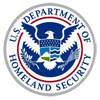Catalog of Environmental Programs 2012
| Federal agencies that contribute to EPA's environmental goals, and how they make a difference. |
the Catalog |
All Programs |
Programs by EPA Strategic Goal 1. Climate Change and Improving Air Quality 2. Protecting America's Waters 3. Cleaning Up and Sustainable Development 4. Safety of Chemicals and Preventing Pollution |
Programs by Agency AID, ARC, CNCS, CPSC, CSB, DHS, DOC, DOD, DOE, DOI, DOJ, DOL, DOS, DOT, ED, FHFA, GSA, HHS, HUD, NASA, NRC, NSF, OSTP, SBA, TVA, USDA, USPS, USTR, VA |

Department of Homeland Security |

EPA Goal 3: Cleaning Up Communities and Advancing Sustainable Development |
National Pollution Funds Center (USCG)
Purpose
The U.S. Coast Guard’s National Pollution Funds Center (NPFC), committed to protecting America’s environment,
provides protection up-front by certifying that oil-carrying vessels have the financial ability to pay
in the case of an oil spill. When spills do occur, the NPFC provides funding for quick response,
compensates claimants for cleanup costs and damages, and takes action to recover costs from responsible
parties. The NPFC is also responsible for administering the Coast Guard portion of Superfund,
which funds the clean-up of hazardous substances and was created by the Comprehensive Environmental
Response, Compensation, and Liability Act of 1980 (CERCLA).
Source(s) of Information
1. USCG: National Pollution Funds Center
Related EPA Program(s)
Oil Spill: Prevention, Preparedness and Response:
The program includes spill prevention, preparedness, and response activities. The Spill Prevention, Control, and Countermeasures (SPCC) serves
to prevent oil spills that have potential to reach navigable waters. Area Planning ensures that EPA and other response organizations have
identified resources that need to be protected, and methods to effectively coordinate during response. The Facility Response Plan (FRP)
requires the largest oil facilities to have capability to respond to a worst-case spill, and EPA’s spill response program has
authorities and resources to lead or oversee oil spill response activities.
Authorizing Legislation
• Federal Water Pollution Control Act, as amended by the Oil Pollution Act (OPA) of 1990.
Other Programs under Goal 3
Other Programs from DHS
Top of page


